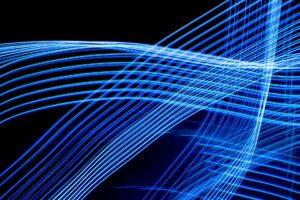

To be more precise, photobiomodulation therapy or low-level fiber laser therapy requires a sufficient quantity of laser beam light energy into injured tissues. The thing is that skin scatters and reflects most of the laser beam light that it is exposed to resulting in great challenges.
Herewith, specific wavelengths of laser beam light energy have the skin penetration ability higher than others. Nonetheless, additional barriers (hemoglobin, oxyhemoglobin, fat, and water) are distinguished under the skin that also catches or reflects more of the remaining laser beam light. Thus, it is necessary to pay careful attention to the choice of therapeutic wavelengths to maximize a fiber laser system’s efficiency.
Also, laser systems with the ideal laser beam wavelengths to penetrate the tissue and a low level of overall power allow efficient treatment of small areas and take 30 minutes or even longer. The possible solution to the low power of fiber lasers and the requirement to treat a large area is substantially increasing treatment time to maintain the necessary dosage.
Such a disadvantage of Class 3b laser systems is considered to be the main reason a lot of early fiber laser research demonstrated amazing results. Compared to Class 3, Class 4 fiber laser systems are used in photobiomodulation, where the previous lasers leave off at 0.5W of laser beam power.
The higher power of laser systems enables “sufficient laser beam energy to be passed onto nerve, muscle, ligament, tendon, and capsular tissue in a reasonable amount of time”. The thing is that the usual therapy session takes from 2 to 6 minutes, which is acceptable in a clinical setting.
Fiber laser systems of high beam quality offer such benefits as the versatility to treat injured tissue in multiple areas in a given session, which greatly improves the overall effectiveness of the laser when adding it to a plan of care. Nevertheless, Class 4 laser systems commonly have a higher cost than Class 3 laser technology.
Finally, it is necessary to take into consideration the following factors when choosing fiber laser products: the laser device manufacturing, warranty parameters, application heads, and a type of available customer service to learn the staff how to use the laser system effectively after it is purchased. Although the fiber laser cost plays a crucial role, careful consideration should be given to the mentioned factors.
Optromix is a fast-growing fiber laser manufacturer and a vendor of optical fiber sensors and optical monitoring systems. The company offers fast turnkey solutions and creates sophisticated fiber laser systems for special purposes. Optromix uses only its technologies and develops a broad variety of fiber lasers. If you have any questions or would like to buy a laser system, please contact us at info@optromix.com

